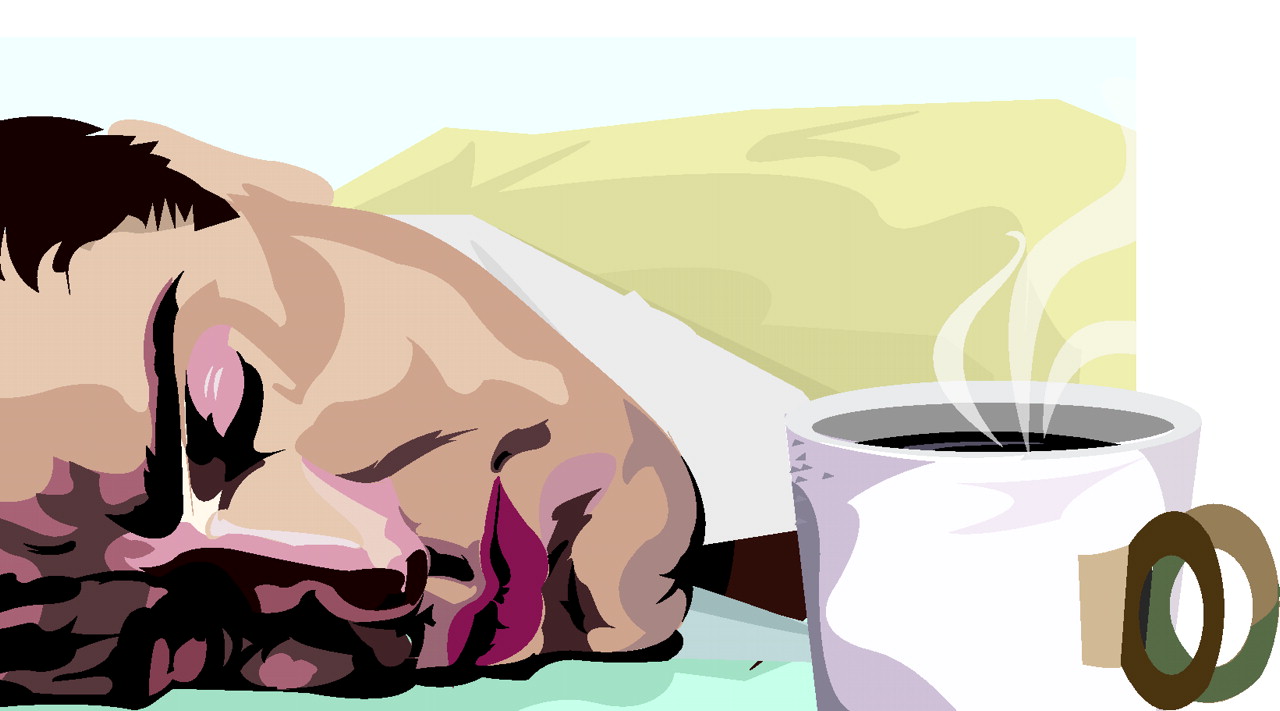Experts Study Consequences Of Sleep Deprivation

The meeting, a joint effort of the Sleep Research Society (SRS) and the American Academy of Sleep Medicine (AASM), drew 3,300 registrants.
In sleepy people, attention wanders and response time slows. Cognitive functioning varies more from moment to moment than it does when people are well rested. Measuring “wake state instability” shows how sleep loss impairs cognitive performance, David Dinges, Ph.D., said in the APSS meeting’s opening address.
Society’s love of caffeine belies its sleepiness, said Dinges, immediate past president of the SRS. He is a professor of psychology in psychiatry and director of the Unit for Experimental Psychiatry at the University of Pennsylvania School of Medicine. American adults drink an average of 3.2 cups of coffee a day, he reported. Coffee is second only to oil as the world’s most widely traded commodity.
Dinges’s laboratory focuses on quantifying the impact of chronic sleep restriction on cognitive and physiological functions and on developing measures to minimize performance decrements caused by sleep loss. Such studies benefit military troops, physicians on call, police, firefighters, transportation industry workers, and others providing round-the-clock services, as well as the population at large.
The researchers have studied 217 subjects in 17 studies, looking at people when they are well rested and after various amounts of sleep deprivation, up to 88 hours in some instances, mimicking military and emergency operations.
Subjects sit at a computer for 10 minutes every two hours around the clock, and perform the psychomotor vigilance task (PVT), a measure of sustained attention. They must press a button as fast as they can when a light goes on or a tone sounds. While individuals vary in ability, PVT performance follows a predictable pattern, with waves of alertness and sleepiness over the day in synchrony with daily biological rhythms.
After eight hours’ sleep, subjects’ reactions typically are quick and regular. Sleep loss increases the propensity for microsleeps, or brief involuntary behavioral lapses, Dinges said. These lead both to errors of omission (akin to failing to stop at a red light) and to errors of commission (swerving off the road). The more lapses people have, the longer and more irregular the lapses get.
After one night without sleep, PVT performance becomes unstable. After three nights without sleep, about 14 percent of subjects experience lapses that last as long as 30 seconds. “A four-second lapse at 60 miles per hour can kill you,” Dinges said. Lapses peak at roughly 7 a.m. to 8 a.m., the same time that driving crashes caused by drowsiness most often occur.
People appear to pay a cognitive price for every minute of sleep below the amount they need to be optimally alert, Dinges said. Some people resist sleepiness better than others, however. Research in progress in Dinges’s lab aims to resolve a long-standing question: whether an individual’s response to sleep deprivation is a stable trait or can be altered by motivation. Pilot studies suggest the former.
Entrepreneurs now market nearly 90 gadgets they claim measure sleepiness in real-world settings such as the cab of a truck or train, Dinges said. These devices assess waking brain-wave activity, eye blinks, eye movements, eyelid droops/closures, pupillary responses, saccadic eye movements, heart-rate responses, electrodermal responses, and more. The debate continues about what action to take when such devices detect sleepiness in a driver.
In another invited lecture, Jerome Siegel, Ph.D., described recent findings on the role of the brain peptide hypocretin in narcolepsy, a disorder characterized by profound sleepiness. More than half of people with narcolepsy also suffer attacks of cataplexy, a sudden loss of muscle tone, often triggered by surprise, fear, or other strong emotions. Siegel is a professor of psychiatry and biobehavioral sciences at the University of California at Los Angeles and chief of neurobiology research at the Veterans Affairs Medical Center in Sepulveda, Calif.
Hypocretin is thought to play a key role in promoting wakefulness and in coordinating arousal and motor activity, Siegel said. Studies in his lab show hypocretin release is maximal in waking and in rapid eye movement (REM) sleep, and minimal in non-REM sleep.
In 1998 Siegel and Emmanuel Mignot, M.D., Ph.D., of Stanford University independently found that brains of people with narcolepsy contained 85 percent to 90 percent fewer hypocretin neurons than normal, as well as gliosis, or neural scarring, in the hypothalamus, where hypocretin cells reside. Selective destruction of hypocretin cells occurs in people with narcolepsy, Siegel said. This finding suggests that an autoimmune attack triggers the disorder.
Studies in Siegel’s lab show that giving immunosuppressive and anti-inflammatory drugs by mouth to genetically narcoleptic dogs can delay the onset of narcolepsy and prevent the development of severe symptoms in these animals. This is the first treatment shown to affect development of narcolepsy symptoms in animals or humans.
Modafinil and other stimulants may reverse some symptoms of narcolepsy by activating surviving hypocretin cells, Siegel said. Administration of a hypocretin-based medication that could reverse the deficiency probably would prove a more effective treatment. Research under way aims to develop this type of drug.
In July the U.S. Food and Drug Administration approved the first medication specifically indicated for the treatment of cataplexy, Xyrem, manufactured by Orphan Medical. Xyrem’s active ingredient is sodium oxybate, commonly known as gamma hydroxybutyrate, or GHB. The drug, which depresses breathing, can induce loss of consciousness. GHB’s misuse for “date rape” led to its being taken off the market in the 1990s. Xyrem, said to cut cataplexy attacks by up to 70 percent, will be available to prescribers only through a single centralized pharmacy at (877) 67-XYREM. Patients must enroll in an FDA-monitored registry and must sign for the drug on delivery. The drug does not reduce sleepiness.
Next year’s APSS meeting will celebrate the 50th anniversary of the discovery of REM sleep at the University of Chicago. It will be held in Chicago, June 3 to 8, 2003. More information is posted on the Web at www.apss.org. ▪



